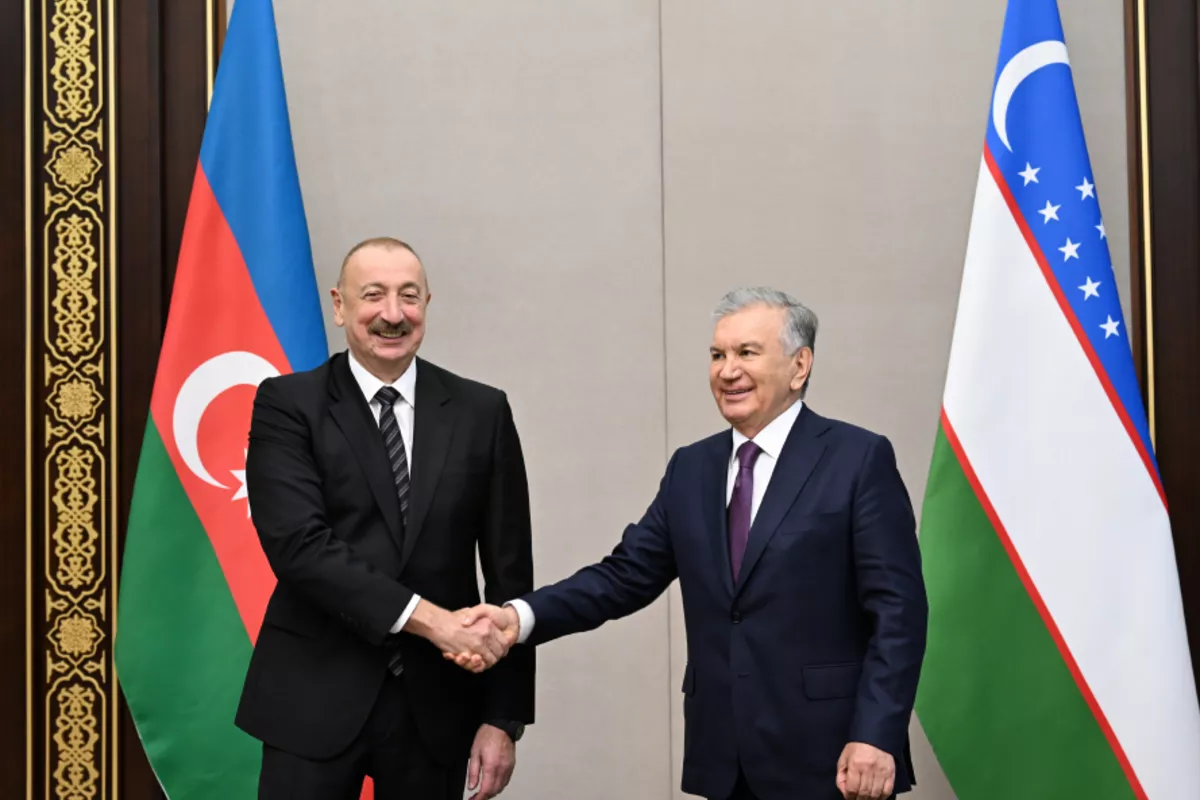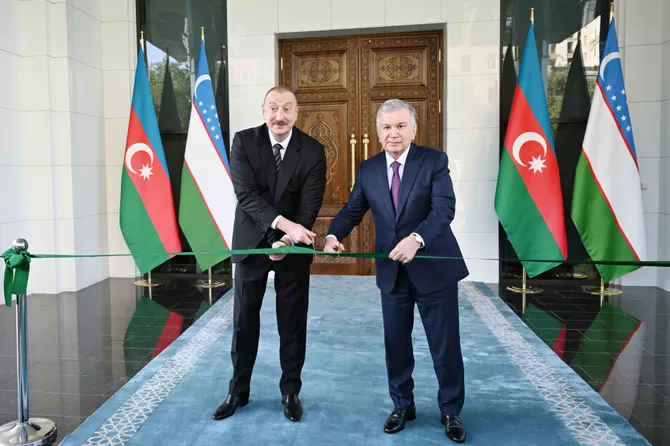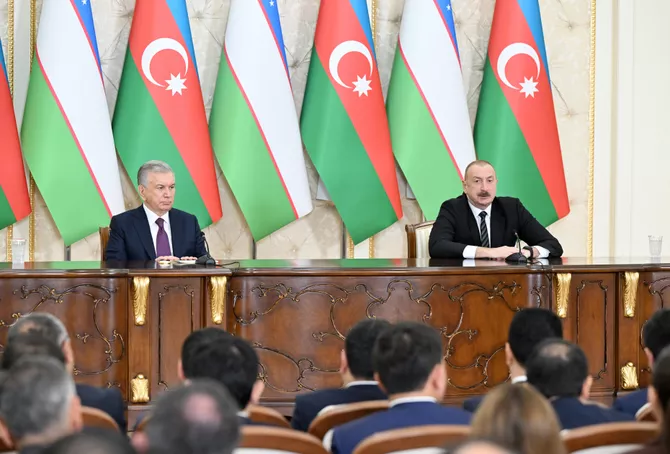
Photo: AZERTAC
In a world increasingly shaped by shifting alliances, contested supply chains, and an intensifying race for energy and infrastructure supremacy, the deepening partnership between Uzbekistan and Azerbaijan stands out as a rare beacon of pragmatic diplomacy and strategic foresight. What began as cordial ties between two post-Soviet republics has evolved into a forward-looking alliance that may redefine the geopolitics of the Caspian and Central Asian regions.
President Shavkat Mirziyoyev’s recent visit to Baku was far more than a ceremonial exchange of diplomatic pleasantries. It marked the consolidation of a burgeoning relationship that now encompasses a growing number of sectors-from transportation and green energy to culture and security. In fact, the timing and scale of this visit-coinciding with the 30th anniversary of diplomatic ties-signal an unambiguous intent: to craft a long-term partnership that can weather the complexities of an increasingly fragmented international order.
At the heart of this evolving alliance is a comprehensive roadmap to 2029. This strategic document outlines plans to boost trade, develop joint infrastructure, deepen industrial cooperation, and expand investment into renewable energy. These are not empty promises. The results are already visible: bilateral trade rose by 25% year-on-year, and the two countries now share a $4 billion joint investment portfolio. This is diplomacy with deliverables.
Perhaps most significantly, Uzbekistan and Azerbaijan are positioning themselves as the backbone of the Trans-Caspian International Transport Route, also known as the Middle Corridor. In a global environment where traditional shipping lanes-such as the Suez Canal and Red Sea-have become increasingly politicized and insecure, this east-west land route, which links China and Central Asia to Europe via the Caspian Sea and the South Caucasus, is gaining new urgency.

Photo: AZERTAC
Uzbekistan’s cargo flow through the Middle Corridor recently surpassed 1 million tonnes, with logistical hurdles reduced through the introduction of digital transit permits and harmonized customs practices. For landlocked Uzbekistan, this route offers vital access to global markets. For Azerbaijan, it reaffirms its role as a key Eurasian transit hub. Together, they are not simply reacting to global trade disruptions-they are proactively reshaping the infrastructure of regional connectivity.
Yet this emerging alliance is not purely transactional. It also represents a new kind of regionalism-one that blends sovereign autonomy with interdependence. In a time when great-power competition threatens to overshadow the agency of smaller nations, Uzbekistan and Azerbaijan are asserting that they too can be architects of their destiny. Their cooperation reflects a confident regional outlook rooted in mutual benefit rather than dependency on any single power bloc.
Green energy is fast becoming another foundational pillar of this partnership. Both countries are pursuing ambitious renewable energy targets, with Azerbaijan seeking to become a clean energy supplier to Europe and Uzbekistan rolling out major solar and wind power projects. Their alignment in this field is not merely about domestic sustainability-it’s a calculated move to build geopolitical relevance in a future energy landscape that will reward those who can supply clean, reliable power to the broader region and beyond.
Cultural diplomacy, often overlooked in geopolitical analysis, is also playing a surprisingly influential role. The laying of the foundation stone for an Uzbekistan Park in Baku, the opening of a new Uzbek embassy with a ceremonial hall dedicated to Karabakh, and continued exchanges in education and tourism are all signs of a relationship that is not just strategic, but deeply respectful. These symbolic gestures carry weight, especially in a region where history, national pride, and memory are woven tightly into political identity.

Photo: AZERTAC
This alliance also breathes new life into the Organization of Turkic States (OTS). Long considered a symbolic bloc, the OTS now appears increasingly relevant as its members demonstrate a shared will to develop cooperative mechanisms across sectors-united by common language, history, and geopolitical interests. The Uzbekistan-Azerbaijan dynamic may well serve as a prototype for future partnerships within the Turkic world and beyond.
Of course, challenges remain. Both countries are operating in a complex neighborhood, hemmed in by larger powers such as Russia, China, and Iran-all of which have their own ambitions in Central Asia and the South Caucasus. Regional instability, unresolved conflicts, and global economic volatility will continue to test the durability of this alliance. But Tashkent and Baku appear to understand the stakes-and they are responding not with isolationism or fatalism, but with investment, dialogue, and strategic cooperation.
As the global center of gravity shifts eastward, this partnership may well emerge as a cornerstone of a new Eurasian political and economic architecture. One that is multipolar, dynamic, and rooted in shared prosperity rather than ideological conformity.
The Uzbekistan-Azerbaijan alliance is not just a story of two nations finding common ground. It is a broader statement that middle powers, through deliberate planning and regional solidarity, can chart a course that benefits their people and strengthens their sovereignty. In an age of geopolitical uncertainty, such clarity of vision is both rare and necessary.
This is not a ceremonial alliance. It is systemic-and may prove to be one of the most resilient and quietly transformative relationships of the decade.
Share on social media